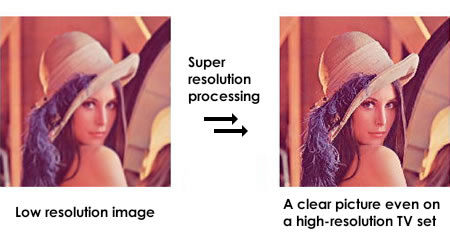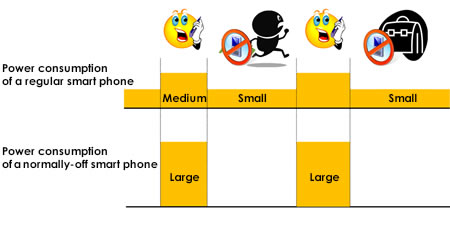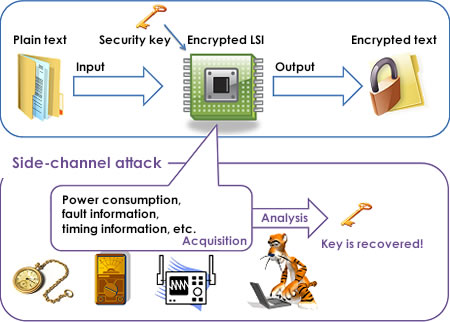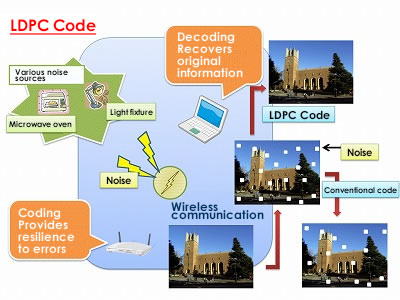The Specialized System Design Group researches efficient systems for specific applications.
Television sets compatible with terrestrial digital television broadcasting use high-resolution panels (2K, 4K, or 8K). Although these high-resolution panels display high-resolution videos such as full HD broadcast and Blu-ray videos clearly, low-resolution video sources such as conventional analog broadcast and DVDs become blurry if they are simply enlarged. Thus, super resolution processing is used to enhance the resolution by applying interpolation between image data. We are designing a super-resolution processing system.

The clock frequency of a smart phone exceeds 1.5 GHz, which means more than 15 hundred million operations per second are possible, but even the fastest human input is only about four characters per second. In addition, a typical smart phone is often stored in a bag or pocket most of the time. Regardless if a smart phone is being actively used, it is continually working.
One area of green computing is called “normally off”, which means to reduce power consumption by shutting down parts of a computer that are not being actively used. Non-volatile memories are particularly useful for normally off because they maintain data even after the power is shut off. Powering off a device causes commonly used memories to lose their data. Consequently, devices do not power down and continually consume power even when not in use, wasting energy. On the other hand, non-volatile memories maintain data even after the power is shut off, but consume a large amount of power when recording data. We are developing systems to complement the shortcomings of these two types of memories.

Miniaturization and higher performance of electronic devices such as mobile terminals and PCs are increasing the internal temperature. However, if the internal temperature becomes too high, the electronic components operate unstably and thermal runaway becomes a risk. Thus, the internal temperature must be kept below a certain level. Until recently, various cooling technologies could address these types of temperature issues, but cooling technologies are becoming cost prohibitive. Hence, our research focuses on thermally aware design. This technology should realize an economic and reliable system.

IC cards such as Suica and Edy are commonplace because a chip card is portable and can identify user information; they are used in finance, transportation, government services, etc. The information on an IC chip is protected by an internal encryption circuit. Side-channel attacks, which occur when confidential information is hacked using the hardware characteristics of the encryption circuit, are becoming an increased threat. There are multiple types of side-channel attacks, including power analysis attack, which measures the power consumption of an encryption circuit to acquire confidential information, fault analysis attack, which leverages fault information, timing attack, cache attack, and scan base attack. We are conducting research on encryption circuits to develop secure chip cards that are resilient to side-channel attacks.

The low-density parity-check (LDPC) code is an error correction code. Accurately decoding data with errors in the communication path is essential to improve the quality and speed of communications for wireless local area networks (LAN) and mobile telephones. The LDPC code is attracting attention due to its high performance in error correction. Since decoding by software is a slow process, decoding hardware needs to be implemented on the system level. We are investigating an LDPC decoding system that can support changes in the communication environment due to movements of wireless terminals.
